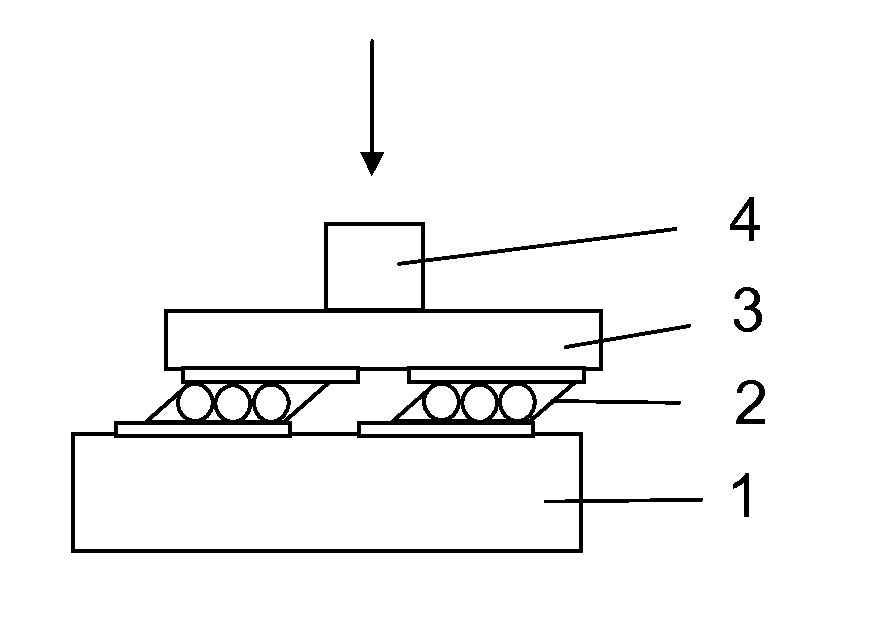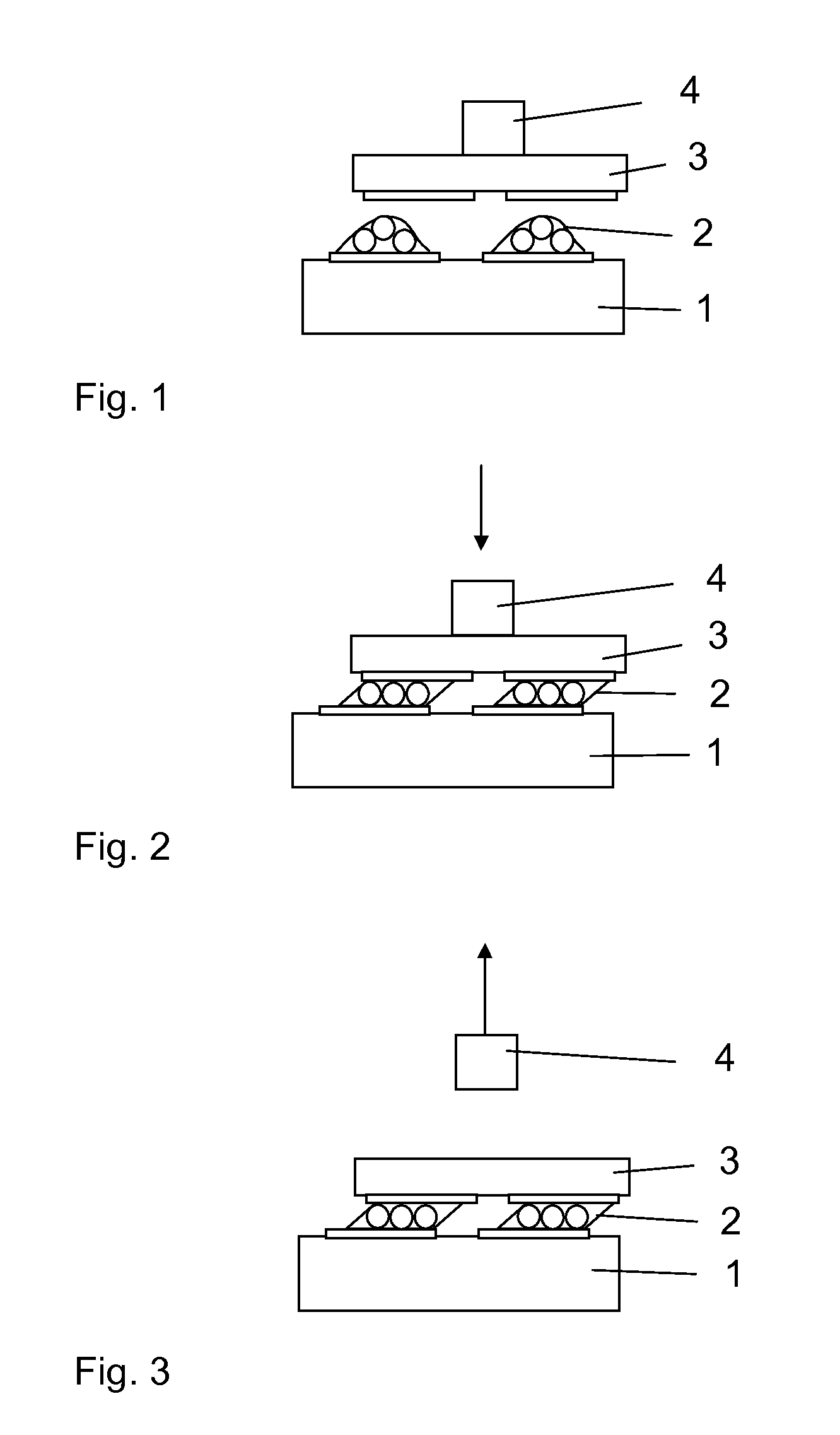Method of soldering an electronic component with a high lateral accuracy
a technology of electronic components and lateral accuracy, which is applied in the direction of welding/cutting media/materials, manufacturing tools, and soldering apparatus, etc., can solve the problem of not allowing the exact positioning of electronic components, and achieve the effect of high positioning accuracy
- Summary
- Abstract
- Description
- Claims
- Application Information
AI Technical Summary
Benefits of technology
Problems solved by technology
Method used
Image
Examples
Embodiment Construction
[0015]In the following the proposed method is described using a SnAgCu solder paste. The paste is prepared based on a commercially available SAC paste which typically contains 96 wt % Sn, 3.5 wt % Ag and 0.5 wt % Cu. To such a paste solid copper spheres having a diameter of 40 to 60 μm and optionally also small spheres with diameters between 10 and 25 μm are added. The proportion of the copper spheres is adjusted such that during reflow the copper spheres are still surrounded by a liquid Sn matrix (10 to 15% copper sphere volume, 35 to 40% SnAg volume and 50% flux volume).
[0016]The prepared solder paste 2 is printed on the board 1 to which the component 3 is to be soldered. The solder 2 is melted in the assembly machine at temperatures between 230° C. and 260° C. The component 3 is then positioned above the board 1 as indicated in FIG. 1. The component 1 is aligned to reference features (not shown in the figures) instead of the solder pads, in order to achieve the desired exact posi...
PUM
| Property | Measurement | Unit |
|---|---|---|
| Diameter | aaaaa | aaaaa |
| Diameter | aaaaa | aaaaa |
| Fraction | aaaaa | aaaaa |
Abstract
Description
Claims
Application Information
 Login to View More
Login to View More - R&D
- Intellectual Property
- Life Sciences
- Materials
- Tech Scout
- Unparalleled Data Quality
- Higher Quality Content
- 60% Fewer Hallucinations
Browse by: Latest US Patents, China's latest patents, Technical Efficacy Thesaurus, Application Domain, Technology Topic, Popular Technical Reports.
© 2025 PatSnap. All rights reserved.Legal|Privacy policy|Modern Slavery Act Transparency Statement|Sitemap|About US| Contact US: help@patsnap.com


